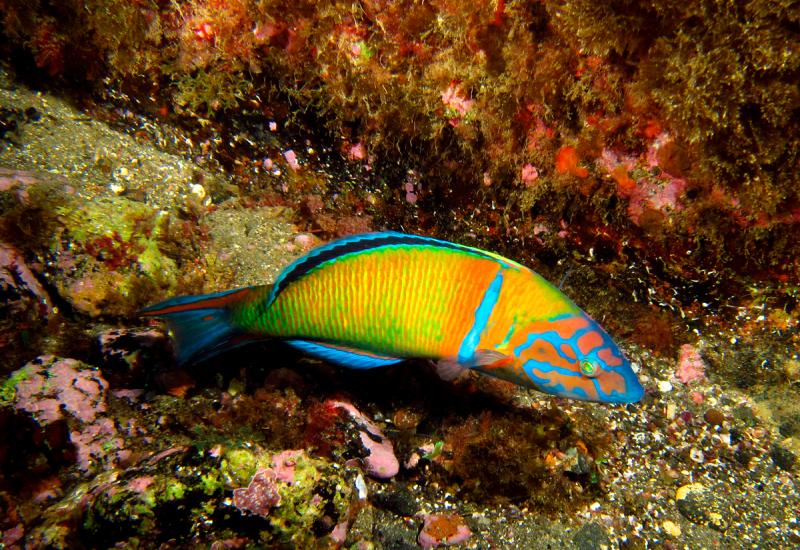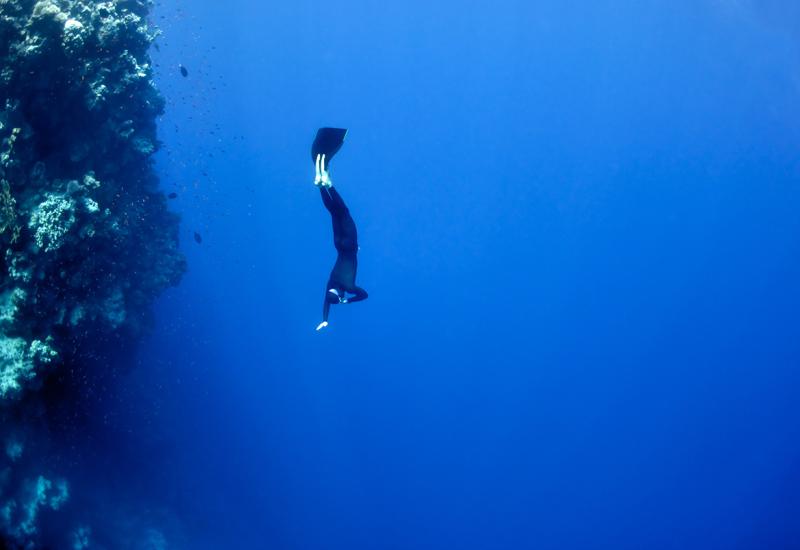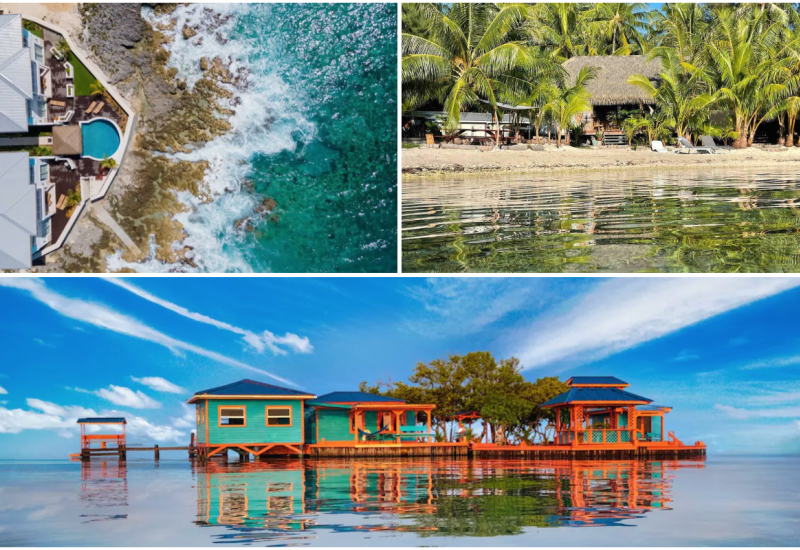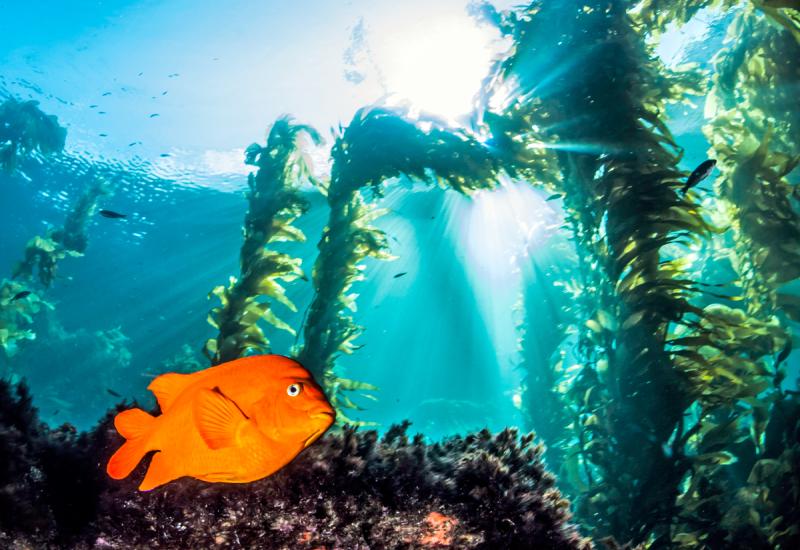Top 100 Destination: Diving in French Polynesia
Honeymooners who arrive at the over- water bungalows of Bora Bora and Moorea are convinced they’ve found Eden. But what most of their blissed-out ilk never realize is they’ve hardly scratched the surface when it comes to all there is in fantastique French Polynesia. Divers, of course, are more clued in. Collectively known as the islands of Tahiti, this volcanic archipelago of 118 islands and atolls includes five island groups, and covers a swath of the Pacific as large as Western Europe. From bejeweled reefs to ripping passes blitzed by pelagics, it’s a lot to take in. Here’s a head start on where to get wet.
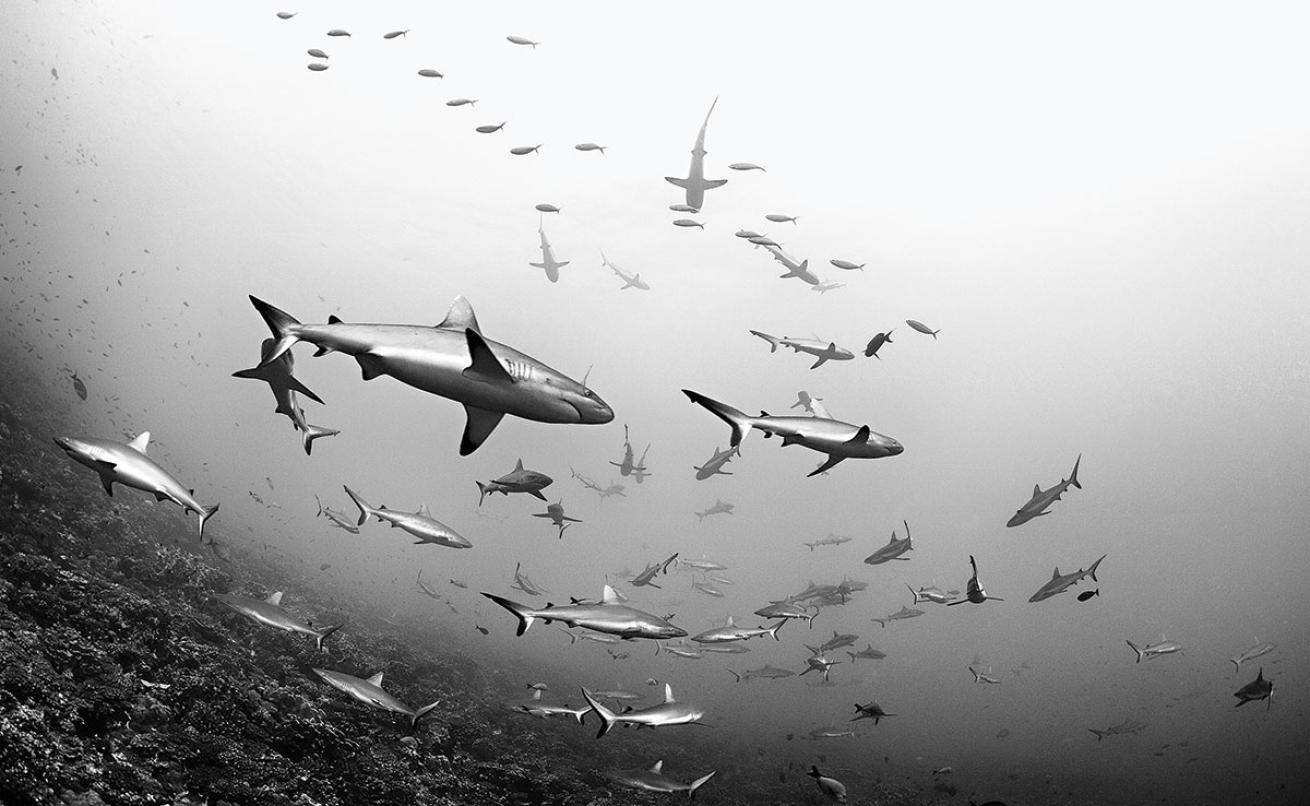
Michael AwSchooling sharks in Fakarava.
Shark Central
Many dive destinations can claim sharks, but it’s hard to think of one that delivers them in the insane abundance of the Tuamotu atolls, the largest of the five island groups, where walls of sharks are the norm. During drift dives in Rangiroa’s Tiputa Pass and Fakarava’s Tumakohua Pass, hundreds of gray reef sharks congregate on the atoll’s outer wall like puzzle pieces in a toothy jigsaw, and silvertips and whitetips make appearances too. “My dive buddy wasn’t lying when he said, ‘Ain’t nobody gonna out-shark us,’” remembers San Diego diver Mark Guinto, who traveled to FP for what turned out to be the sharkiest dives of his life (gray sharks, lemon sharks, whitetips, silvertips and more). “Almost everyone was there to dive with sharks, and there were several species of them in great number,” says Guinto. Great hammerheads also are spotted fairly regularly at the passes, and tiger sharks make appearances too — making it easy to see why FP also took top honors for Best Big Animals.
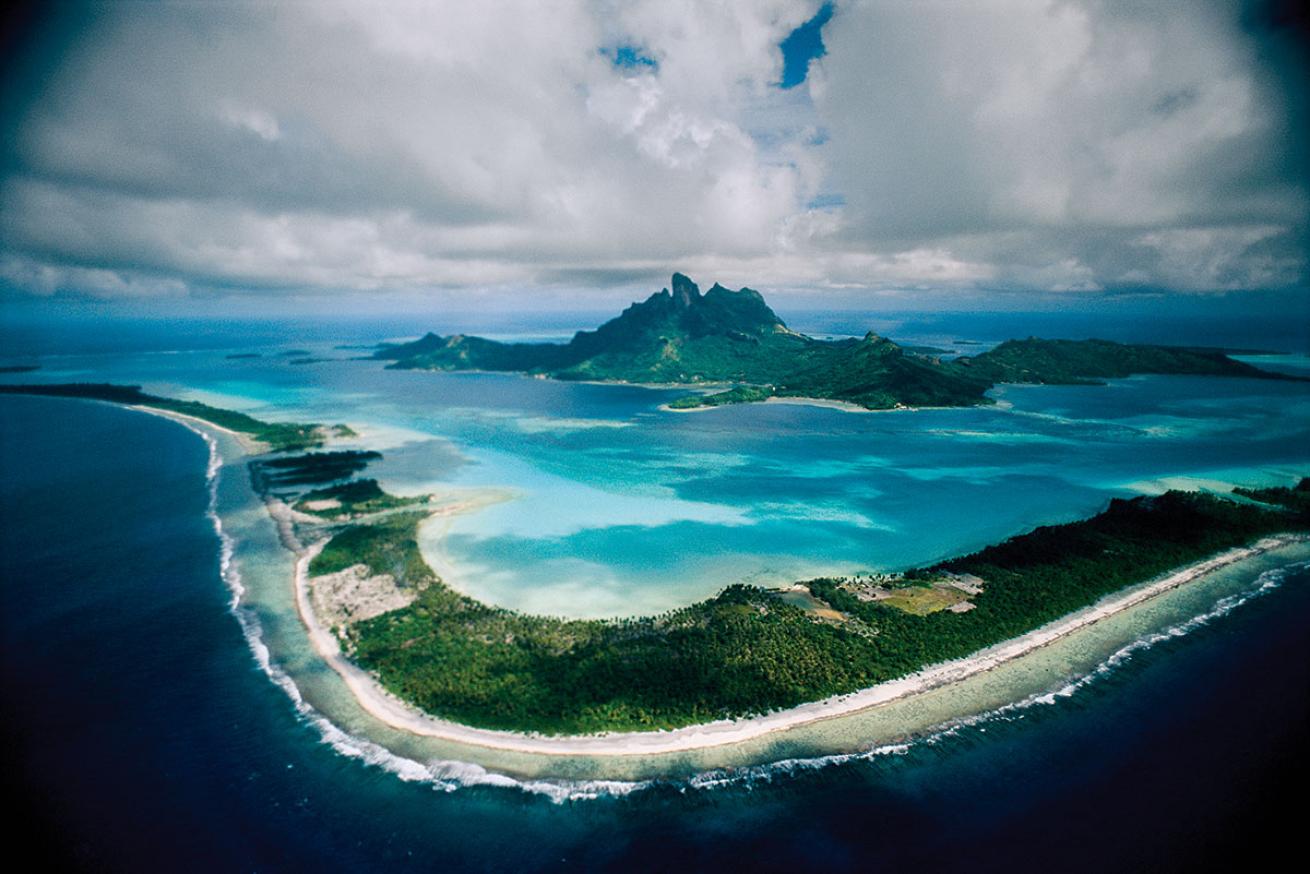
Jodi Cobb/National Geographic CreativeBora Bora lures divers with a lush topside and shimmering lagoon.
Wide-Angle Wonderland
French Polynesia’s dazzlingly clear seascapes are to wide-angle photography what Lembeh is to a macro lens: the dream destination for clicking the shutter on some of the world’s most singular underwater moments, earning FP the No. 2 spot for Best Underwater Photography in the Pacific and Indian Ocean region. Excellent visibility that consistently surpasses the 100-foot mark enhances your photos, with ambient light a particularly saturated shade of blue. From the plunging walls of the Tuamotu passes and the Opunohu canyons of Moorea to Fitii pass in Huahine in the Society Islands (a calmer version of a Tuamotu-style drift), a wide-angle lens is your best friend for capturing walls of sharks, schooling jacks, mantas, dolphins and the like. “There is nowhere on Earth that compares to the stunning atolls of the Tuamotu chain when it comes to reef shark photography,” says Mike Veitch, an underwater photographer based in Bali. “The clear water and amazing abundance of sharks there is unmatched anywhere.”
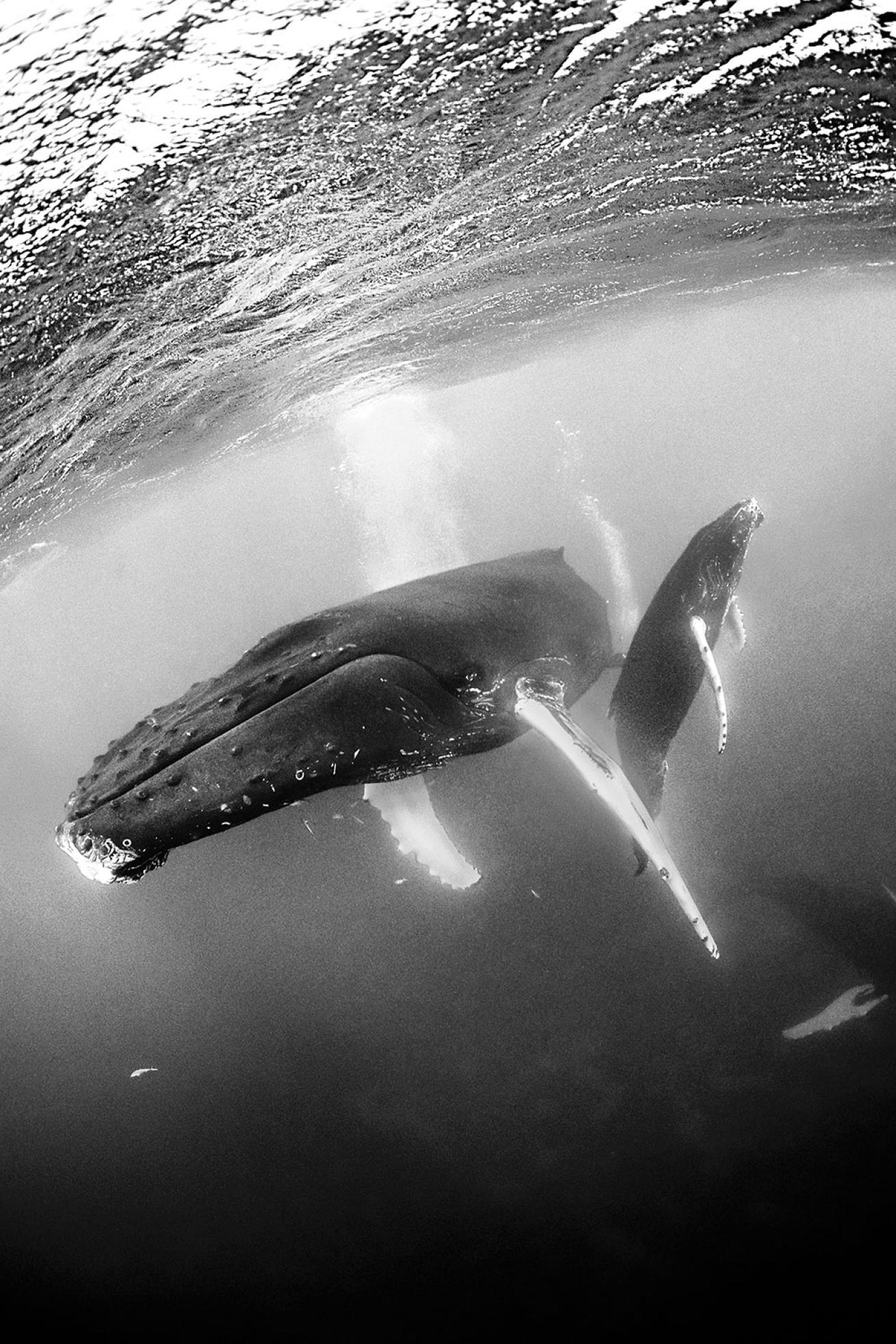
Reinhard Dirschierl/SeapicsFrom mid-July to late October, visitors to Rurutu in the Australs can snorkel with migrating humpbacks.
Migrating Humpbacks
From mid-July to late October, visitors to Rurutu in the Austral archipelago (the southernmost group in French Polynesia) are treated to one of the ocean’s most awe-inspiring experiences — the chance to snorkel alongside humpback whales and their babies, drawn to the shallow, sheltered waters as a stopover on their migration path to Antarctica. Whaling stopped on this lagoonless island in the 1950s, and whale-watching tourism and snorkeling tours have brought a new livelihood for the people living here. The seas can be rough at this time of year, and visibility can be compromised, but when you find yourself finning alongside one of the gentle giants that come here to reproduce, calve and nurse their young, you’ll be left humbled for life.
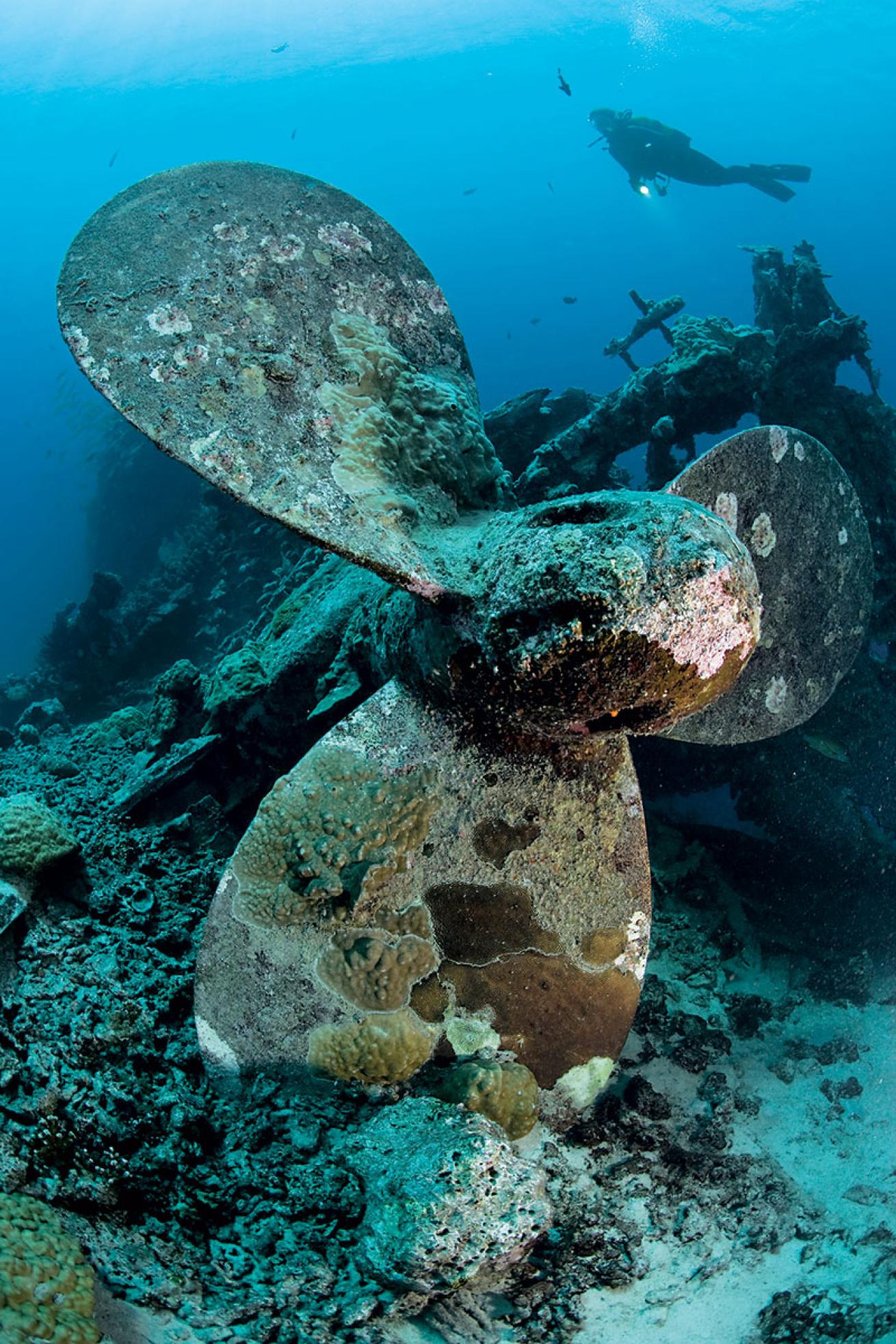
Franco Banfi/Getty ImagesThe wreck Les Trois Epaves beckons off Tahiti.
Pelagic Paradise
Coastal and open-ocean pelagic species abound in French Polynesia, and therein lies the excitement of diving here — you never know when a great hammerhead, manta ray or tiger shark will go cruising past you. On the pearl-farming coral atoll of Manihi, mantas can sometimes be seen carousel-feeding in about 30 feet of water at the dive site called the Circus. Jacques Cousteau’s explorations in Tikehau in the Tuamotus found a higher concentration of species there than anywhere else in French Polynesia (he called the atoll the richest on Earth). Tikehau remains a pelagic gold mine for shoaling barracuda, manta rays and the usual shark denizens. And on Rangiroa, a veritable underwater Serengeti awaits.
“The concentration of colors and species was a sensory overload,” remembers Katharyne Daughtridge Gabriel, a diver who lives near London. “We saw gray sharks, whitetip sharks, barracudas, manta rays. And on the exit, I remember thinking, ‘I just foated through Jacques Cousteau’s dreams.’”
Ripping Drift Dives
Drift dives are a bit of a misnomer for the experience that awaits when you find yourself aviating through the famed atoll passes of Rangiroa, Fakarava and Tikehau in the Tuamotus. Sites like Tiputa and Avatoru passes in Rangiroa and Fakarava’s famed south pass, Tumakohua, are considered advanced dives due to the strong tidal currents pushing you into the lagoon that range between 3 and 8 knots. (Plan some refresher-level drift dives on Huahine in the Society Islands if you’re out of practice.) “It felt like I was flying next to a mountain-side,” remembers Guinto, a pilot who teaches military parachuting, of a dive at Tiputa Pass. “As a sky diver, I’ve had similar sensations.” Indeed, if any diving experience approaches the sensation of aerial acrobatics underwater, it’s the roaring passes of the Tuamotus — one reason FP was lauded as Best Advanced Diving in its region.
Pearl Farms
One of the pleasures of French Polynesia is shopping for Tahiti’s famed black pearls — which come in many sizes, shapes and colors, from black to shades of green, blue, bronze, aubergine and even pink — at a local pearl farm. At destinations such as Rangiroa and Tikehau, you can borrow a bike from your dive resort and pedal along sandy lanes fringed with palms to inspect the goods, or take a tour at farms such as Gauguin’s Pearl in Rangi or Fakarava’s Pearls of Havaiki.
The Land of Gauguin
The goal is to spend as much time as possible underwater, but some of the planet’s most jaw-dropping tropical landscapes — old volcanoes glinting with rainbows and emerald slopes lapped by perfectly peeling waves — make any time spent topside a treat too. From the mist-carpeted mountains of the Marquesas, where the French artist Paul Gauguin spent his final years, to Moorea’s lush Route d’Ananas (Pine- apple Route), best explored by scooter, and the iconic extinct volcanic peaks of Mount Pahia and Mount Otemanu on Bora Bora, you’ll need extra memory cards. Add to all that lushness the barren beauty of the atolls — sandy rings lapped by turquoise water and dotted with tiny motus (islets) that materialize as you descend toward the Tuamotus — and it’s visual overload in the very best sense, making it clear why readers named French Polynesia Best Overall Destination. “Everything feels exaggerated in its beauty,” remembers Janet Malin of time spent snorkeling with sharks and rays in Moorea’s lagoons. “The electric green of the land, fuchsia flowers, water this crazy royal blue, even the locals’ tattoos.”
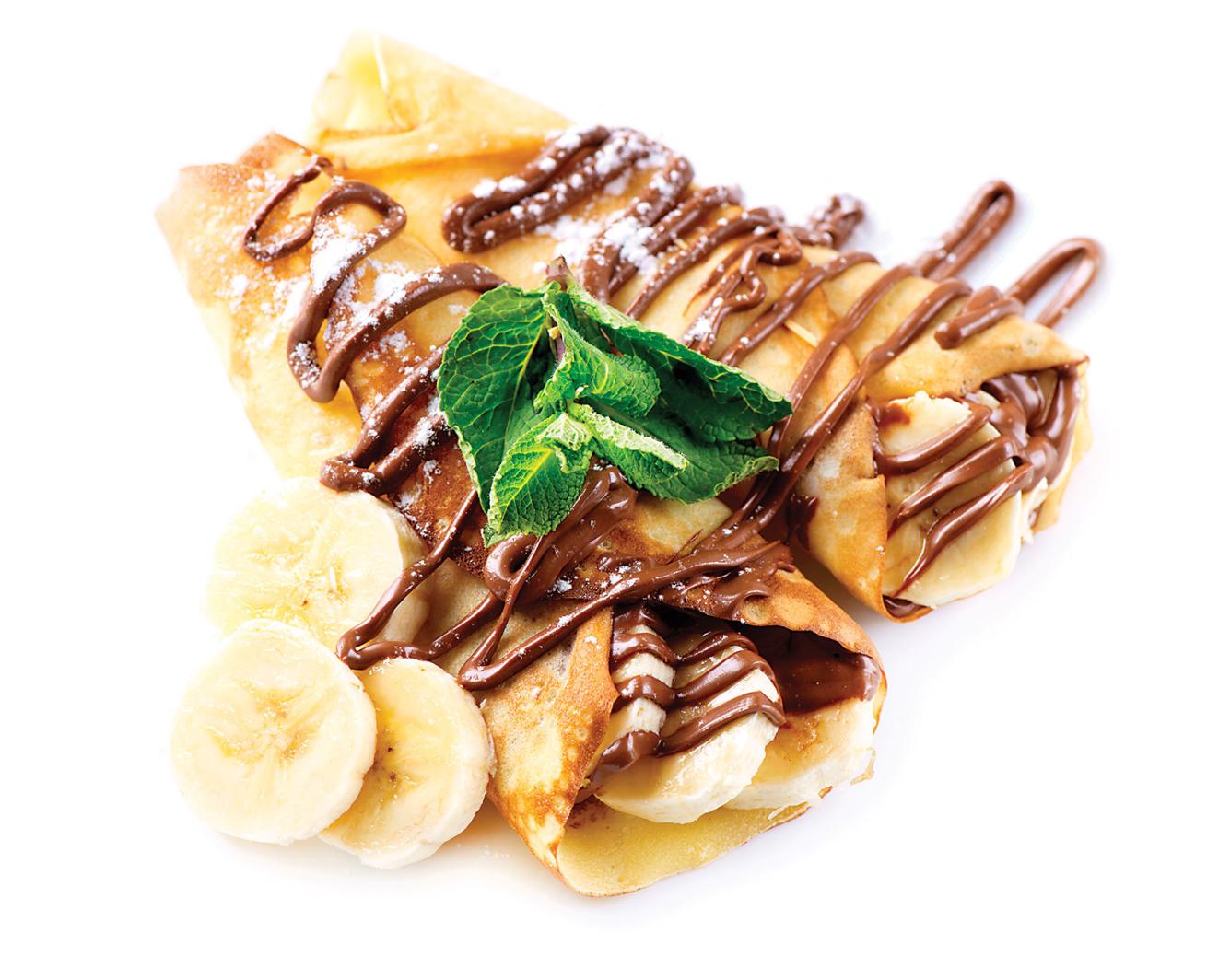
ShutterstockFrench Style Crepes
EAT
For dining on the (relatively) cheap, alongside locals in Papeete, look for food trucks called roulottes. Skirted with picnic tables, they serve things like grilled mahimahi and French-style crepes and steaks. Can’t decide which? Look for the most crowded.
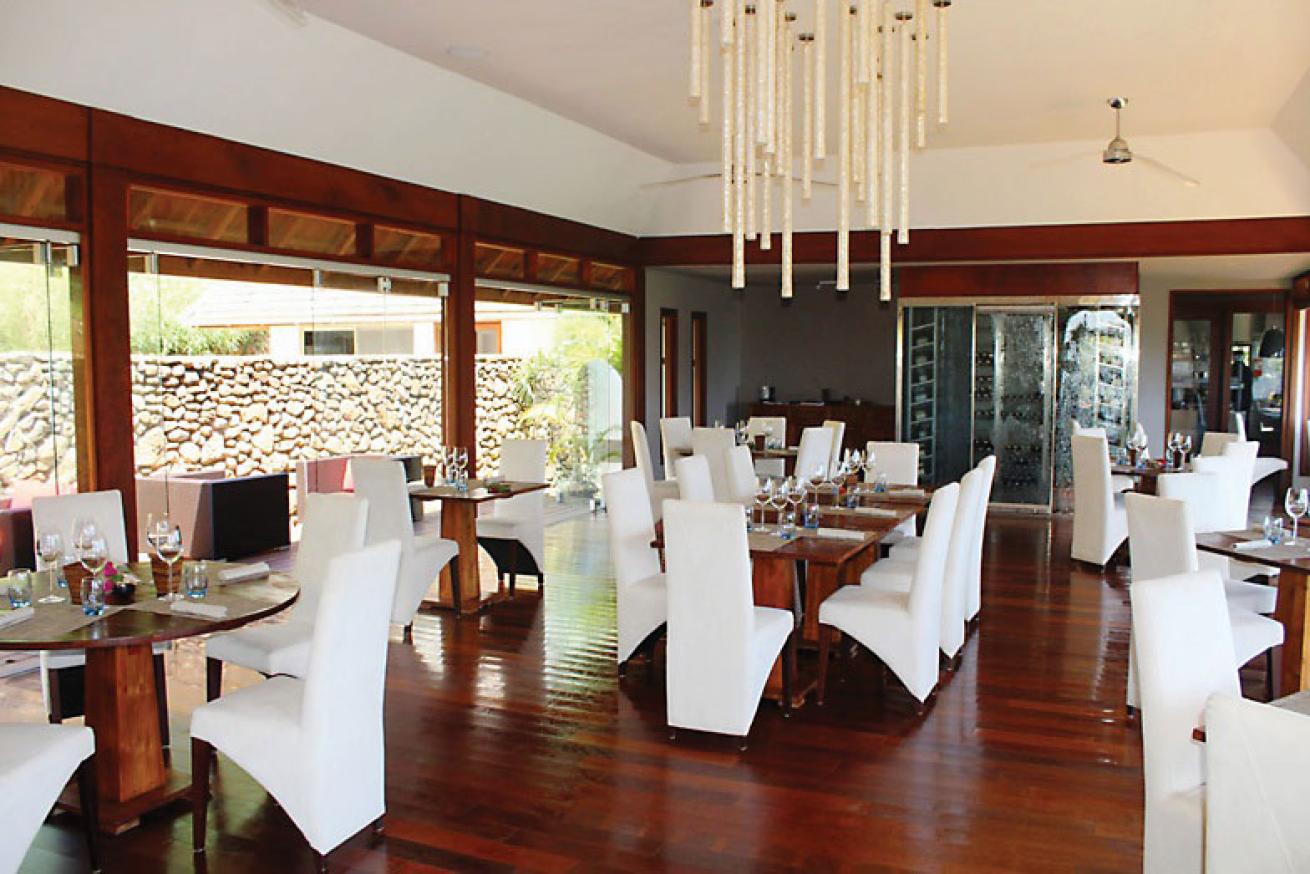
wedotahiti.comLe Cocos restaurant in French Polynesia
DRINK
One of the best wine lists in French Polynesia — heavily French, of course — awaits at the new Moorea outpost of Le Coco’s, opened in March 2015 in Haapiti (lecocostahiti.com). Try the three-course sampler option to get a wider range of tastes.
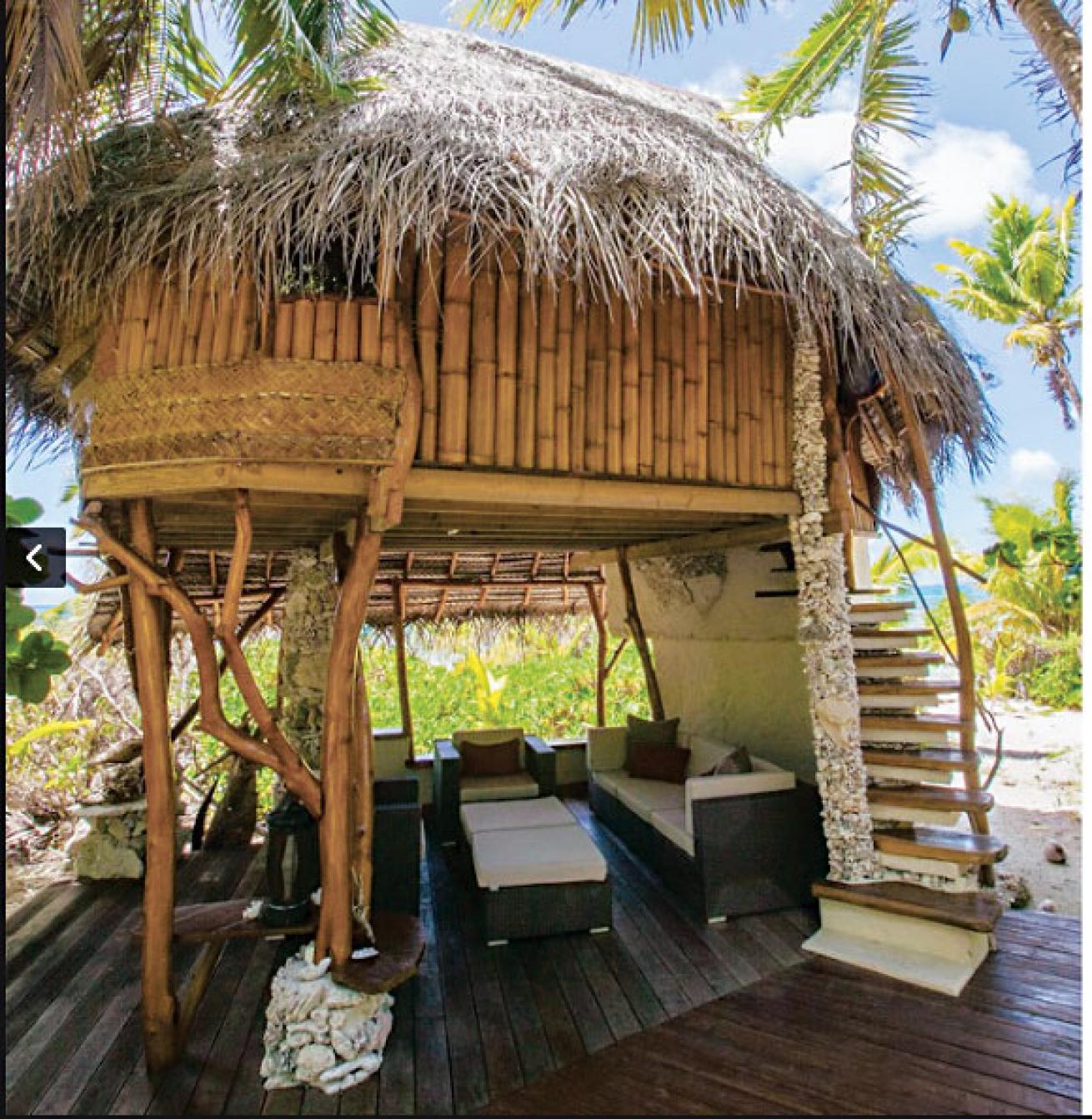
Courtesy Ninamu ResortBungalow in Ninamu Resort
SLEEP
Mingle with big-wave surfers and kite surfers who also enjoy diving at Ninamu Resort (motuninamu.com) on Tikehau. The property has six bungalows and is completely of the grid, producing its own solar power and filtering its drinking water.
NEED TO KNOW
When To Go You can dive year-round in French Polynesia, but it’s rainier during the Southern Hemisphere summer, from November to March.
Travel Tip If you’re coming from the East Coast, consider staying a night in Los Angeles on your way to Tahiti. That way, you will arrive refreshed and ready to dive.
Dive Conditions Visibility in French Polynesia can reach up to 150 feet, and the water temperature averages 80 degrees.

